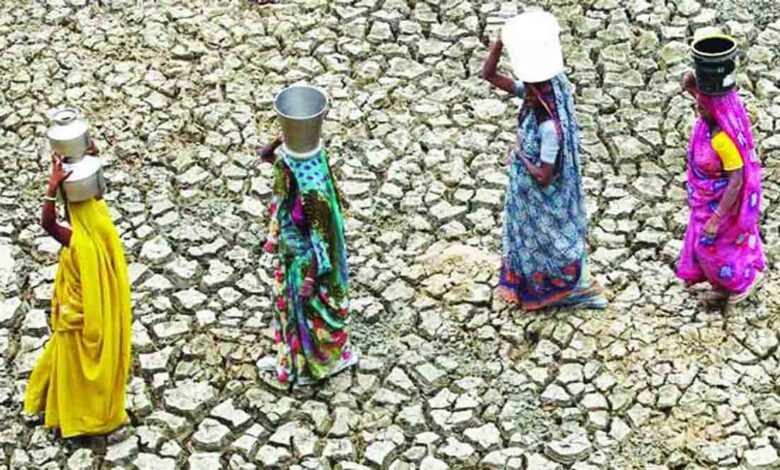GUEST COLUMN : Focus on land restoration, desertification & drought resilience on this WED

 Govind Singh Rajwar
Govind Singh Rajwar
The theme for this year’s World Environment Day on June 5 is “Land Restoration, Desertification and Drought Resilience”. The slogan of this event for this year is “Our Land, Our Future. We are Generation Restoration.” World Environment Day (WED) was established in 1972 by the United Nations at the Stockholm Conference on the Human Environment after discussions on integrating human relationships and the environment. A year later, on June 5, 1973, the first Environment Day was held with the theme “Only One Earth”. This is the biggest international day for the cause of the environment, led by the United Nations Environment Programme (UNEP) and has been held annually since 1973. Land restoration is a key pillar of the UN Decade on Ecosystem Restoration (2021-2030), a global call for the protection and revival of ecosystems across the world, which is critical to achieving the Sustainable Development Goals (SDGs). The organisers will unite people around the world to restore ecosystems The Kingdom of Saudi Arabia will host the 2024 World Environment Day global celebration. As a nation facing degradation, desertification and drought, Saudi Arabia is working to deliver solutions. It is acting nationally and regionally through the Saudi Green Initiative and the Middle East Green Initiative. The actions of the Saudi presidency of the G20 resulted in the adoption of the Global Land Restoration Initiative. Such leadership and action are vital as we face high intensity of the triple planetary crisis: the crisis of climate change, the crisis of nature and biodiversity loss and the crisis of pollution and waste. This crisis is placing the world’s ecosystems under assault.
Various ecosystems of the world are being heavily inundated by plastic. More than 400 million tonnes of plastic is produced annually, half of which is classified as being single-use, of which only 10 per cent is recycled. An estimated 19-23 million tonnes go into lakes, rivers and seas. Nowadays, plastic plugs the landfills, leaches into the ocean and is combusted into toxic smoke, making it the biggest threat to the planet. The single-use plastic products have severe environmental, social, economic and health consequences. In total, half of all plastic produced is designed for single-use purposes. A forecast says that the level of greenhouse gas emissions associated with the production, use and disposal of conventional fossil fuel-based plastics would grow to 19 per cent of the global carbon budget by 2040. Rivers and lakes carry plastic waste from deep inland to the sea, making them major contributors to ocean pollution. Unless we change how we produce, use and dispose of plastic, the amount of plastic waste entering aquatic ecosystems could nearly triple from 9-14 million tonnes per year in 2016 to a projected 23-37 million tonnes per year by 2040.
Desertification is a global issue as the world loses an estimated 100 million hectares of healthy land annually due to desertification, drought and land degradation. The causes of rapid land degradation are mainly due to unsustainable land management practices leading to soil erosion. Some regions of the world show a severe loss of soil, thereby causing degradation of land. For example, Eastern and Central Asia, Latin America and the Caribbean have more than a fifth of their total land areas classified as degraded. The United Nations Convention to Combat Desertification (UNCCD) has set a target to restore one billion hectares of degraded land by 2030. Botswana and Dominican Republic have shown good results. Land restoration can reverse the creeping tide of land degradation, drought and desertification. Restoration boosts livelihoods, lowers poverty and builds resilience to extreme weather. Restoration also increases carbon storage and slows climate change. The drivers of land degradation, drought and desertification need to be ended. The world is facing the impacts of rising temperature, not just in heat, but in storms, floods and drought. Restoring land without mitigating climate change would be like giving with one hand and taking away with the other, so G20 nations must come forward across the whole climate agenda – as Saudi Arabia has done and continues to do on land restoration. By hosting World Environment Day, and through hosting the UN Convention to Combat Desertification’s Conference of the parties in December 2023, Saudi Arabia can build momentum and action towards these restoration goals, slow climate change, protect nature and boost the livelihoods and food security of billions of people around the world. The World Environment Day celebrations bring together millions of people from across the globe, engaging them in the effort to protect and restore the Earth. People from more than 150 countries participate in WED, which makes environmental action and asks the power of governments, businesses and individuals to create a more sustainable world. In India land degradation and desertification pose an environmental problem as the deserts are said to be spreading to the vegetated and human settlement areas.
Natural spaces such as forests, farmlands, savannahs, peatlands and mountains provide humanity with food, water and raw materials for survival. As per estimates, more than two billion hectares of the world’s land is degraded, which is affecting more than three billion people. UNEP aims to show governments, businesses and everyday people can halt land degradation and restore natural spaces to their former shape. It is expected that this year United Nations, NGOs and other bodies will celebrate together the WED to show how best they can tackle the problem of desertification, land degradation and drought. The majority of people living in Asia and the Pacific live in cities and the increasing urbanisation is expected to increase the impacts of water stress and urban droughts. On WED, the UNEP will bring together on a platform the partners and stakeholders in Asia and the Pacific to discuss the priority areas on land restoration, desertification and drought resilience in the region. During this event, the solutions applicable for the region will be discussed and applied, such as circular water resource use, sustainable food production and drought-resilient urban development.
Restoring ecosystems is much more than planting trees and involves reviving the natural processes and relationships that sustain life. More efforts are needed to meet the required restoration goals and to mitigate the widespread impacts of land degradation on ecosystems, food security and climate change. Urgent action to mitigate the climate crisis is required as highlighted in the latest IPCC report, which warns of rising temperatures and biodiversity loss. In Atharvaveda, the Earth is considered as the mother, and human beings symbolise her sons. Not only this, Vedas have also explained the importance of trees and plants including their plantation on the lunar eclipse day. Trees provide us with Prana Vayu and maintain the harmony between the earth and the sky. As per Vedic astrology, a person can get freedom from ailments, physical, social, and economic problems by planting a tree. This is perhaps one of the reasons, our ancestors worshipped trees. By restoring ecosystems, we can mitigate climate change and improve human well-being. Reforestation is not only important for the environment but also economically beneficial. Green recovery strategies provide a unique opportunity to prioritise ecosystem restoration. Everyone – governments, businesses, communities and individuals—has a role. The most important need of the day for our planet is to mount public and political pressure to scale up and speed up actions from governments, companies, and other stakeholders to solve the desertification crisis.
(Asia representative at the International Society of Ethnobiology, the author is a former professor of botany who has also researched the ecology of the Himalaya & other mountain ranges; views expressed are personal)






